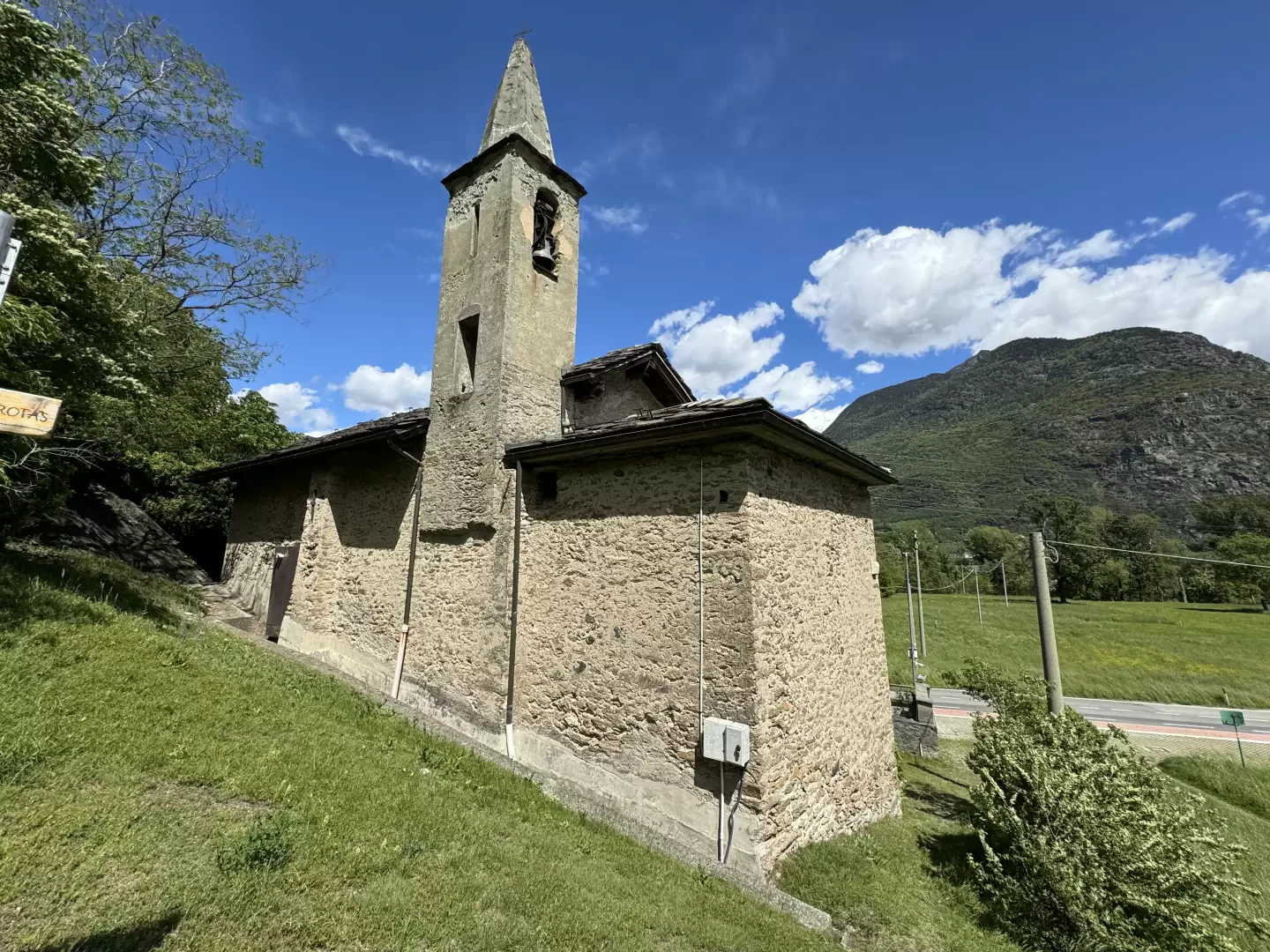Saint-Solutor Chapel in Fleuran

Access
Leaving the motorway at the Verrès tollgate, take the first exit and take the in the direction of Turin. After 240m, at the traffic lights, turn right into Via delle Murasse (narrow) to be followed for about one kilometre until you reach the bridge over the Dora Baltea. At the end of the bridge, turn right onto the municipal road for Champdepraz. After 200 metres, on the left, there is a large car park near the Saint-Solutor Chapel.
[0h03'] - [1.80km]
How to get there with GMaps
How to get there with Apple Maps
The directions given here have been verified on the date of the survey of the route. Before setting off, it is advisable to ensure that no substantial changes have occurred on the route to the starting point. Therefore, we recommend the use of the satellite navigation apps provided by Google or Apple to obtain up-to-date and detailed directions.
Introduction
The Chapel of Fleuran is located in the commune of Issogne surrounded by the cemetery and sandwiched between the Dora Baltea river and the rock at the edge of Fleuran. It is dedicated to Saint-Solutor, a soldier of the Theban legion who, together with Saint Adventor and Saint Octavius, fought valiantly and were martyred at Agaune in 286.
.Description
The church's oldest architectural elements seem to date back to the 10th century. It reveals a technical anomaly in Romanesque art: in fact, its orientation is shifted 85° southwards compared to the classical east-west axis. A 15th-century fresco depicting St. Christopher is visible on the façade. Inside, admire the carved wooden altar.
However, the first historical evidence of the existence of a religious building in Issogne only dates back to 1152: in that year Pope Alexander III. A bull by Eugene mentions, among the entities affiliated to the bishop of Aosta, a chapel in a place identifiable with our village. The same chapel was opened only twenty-four years later by Pope Paul III. It is referred to as a 'church' in Alexander's edict of 20 April 1176, which also includes the church of Saint-Solutor.
The outer wall of the Saint-Solutor chapel has a series of hanging arches that date it to the 12th century.
The façade features frescoes dated 1427 and attributed to the same painter as the church of Saint Martin of Arnad. These depict St Christopher, St Francis of Assisi and the Virgin Mary enthroned with Child.
In the interior, admire the beautifully carved, painted and gilded wooden altar, redesigned in the 18th century, but unfortunately deprived of some decorative elements.
Next to the chapel is an old cemetery.